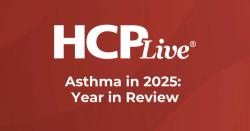
OR WAIT null SECS
Mohamed Tausif Siddiqui, MD: Comparing Tunneled Catheters with PICCs
Tunneled catheters resulted in lower rates of deep vein thrombosis when compared to PICCs.
The risk of developing deep vein thrombosis (DVT) following home parenteral nutrition (HPN) for inflammatory bowel disease (IBD) is substantially lower when using tunneled catheters compared to peripherally inserted catheters (PICCs).
In new data presented during the annual American College of Gastroenterology (2020) conference, investigators from the Cleveland Clinic showed how the risk differs based on the delivery system used for home parenteral nutrition.
In the retrospective analysis involving patients with either ulcerative colitis or Crohn’s disease who received HPN between 2013-2019, the investigators found the overall rate of catheter-associated DVT was 4.4%. Within the study, there was a total of 407 patients with 744 catheter placements and a total duration of 317,777 days.
Overall, PICCs were placed in 205 episodes, while the remaining situations involved tunneled catheters. The tunneled catheters were also used for significantly longer periods in the study.
The rate of catheter-associated DVT was 5.4% in the patients with PICC lines, while it was only 4.1% in individuals with tunneled catheters.
In addition, patients with PICCs had twice the rate of DVT compared with tunneled catheters (0.16 vs. 0.08 per 1000 catheter days, respectively), following a review of the rates by catheter days.
In an interview with HCPLive®, Mohamed Tausif Siddiqui, MD, fellow in the Department of Gastroenterology, Hepatology and Nutrition in Cleveland Clinic’s Digestive Disease & Surgery Institute, explained what the impact of the study will be.


